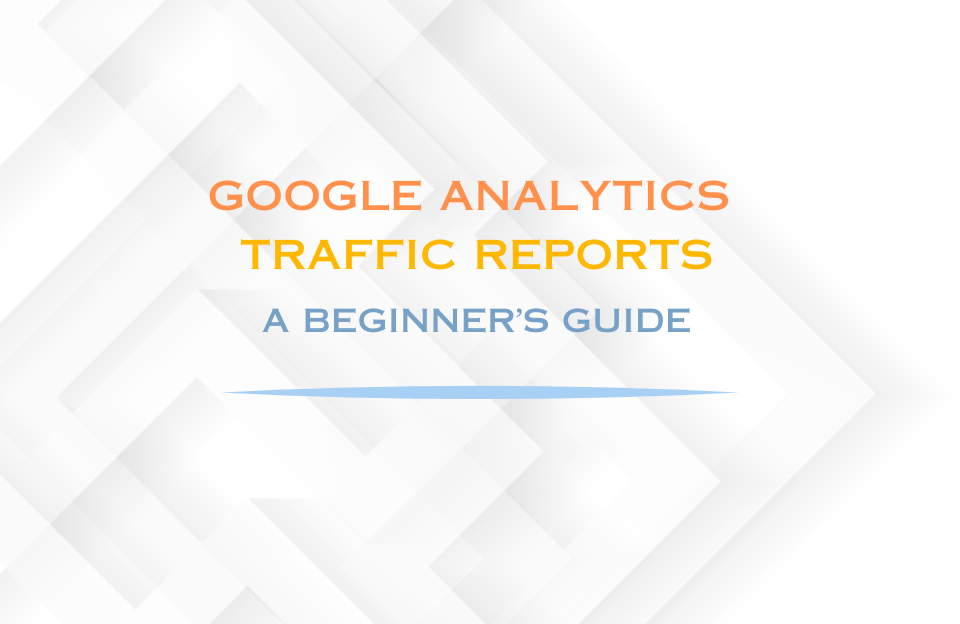Understanding where your website traffic comes from is crucial for refining your digital marketing strategy. Google Analytics’ traffic reports offer detailed insights into how users arrive at your site, whether it’s through organic search, paid ads, social media, or other channels. In this blog, we’ll explore how to use Google Analytics traffic reports to improve your marketing efforts, allocate resources effectively, and optimize your website.
What Are Traffic Reports in Google Analytics?
Traffic reports in Google Analytics provide data on how users found your website. These reports break down your visitors by traffic sources, helping you identify the most effective channels and understand user behavior better. Google Analytics groups your traffic into different categories such as organic search, paid search, social, referral, and direct traffic, giving you a clear picture of where your visitors come from and how they interact with your site.
Why Are Traffic Reports Important?
- Measure Campaign Effectiveness: Traffic reports help you gauge the performance of your marketing campaigns and identify which channels drive the most traffic.
- Optimize Budget Allocation: By knowing which traffic sources deliver the best ROI, you can allocate your marketing budget more efficiently.
- Improve User Experience: If you identify sources of traffic that have high bounce rates, it can indicate that you need to optimize your content or user experience for that channel.
- Monitor Brand Awareness: Traffic reports help track the effectiveness of brand-building activities, especially for social media or direct traffic.
Key Traffic Reports in Google Analytics
Google Analytics offers several types of traffic reports, each offering valuable insights into different aspects of website traffic. Let’s break down the key traffic sources.
1. Channels Report
This report provides a high-level overview of your traffic sources by categorizing them into predefined channels such as:
- Organic Search: Traffic that comes from search engines like Google.
- Paid Search: Traffic driven by Google Ads or other paid search campaigns.
- Direct Traffic: Visitors who type your website URL directly into the browser.
- Referral: Visitors who come from external websites (not from search engines or social media).
- Social: Traffic from social media platforms like Facebook, Instagram, and Twitter.
What You Can Do:
- Identify which channels are performing best in terms of traffic volume.
- Evaluate which marketing efforts (SEO, PPC, social media) are driving the most visitors to your site.
- Adjust your marketing strategy based on the most effective channels.
Example: If your organic search traffic is low but paid search traffic is high, you might decide to invest more in SEO and reduce spending on paid ads.
2. Source/Medium Report
This report goes even further by breaking down traffic into specific sources and mediums, such as:
- Source: The origin of the traffic (e.g., Google, Facebook, Newsletter).
- Medium: The method of traffic delivery (e.g., organic, CPC for paid search, referral).
What You Can Do:
- Determine exactly where your visitors are coming from (i.e., Google vs. Facebook).
- Understand how your paid campaigns or organic efforts compare in terms of driving traffic.
Example: If you’re running a Google Ads campaign, this report can show you how well your ads perform compared to organic search traffic.
3. Landing Pages Report
This report shows the first pages users visit when they arrive at your website. It’s an excellent way to understand which pages attract the most traffic.
What You Can Do:
- Optimize high-traffic landing pages to increase engagement and conversions.
- Evaluate which content or products draw the most visitors.
Example: If a particular blog post or product page is driving a lot of traffic, you could create more content around that topic or product to further attract users.
How to Use Traffic Reports to Improve Your Marketing Strategy
Once you understand the data provided by Google Analytics traffic reports, you can use it to refine your marketing strategies. Here’s how:
- Identify High-Performing Channels: Focus your efforts on the channels that drive the most traffic. For example, if organic search is your top performer, you may want to invest more in SEO efforts.
- Evaluate and Optimize Paid Campaigns: If your paid search (PPC) campaigns are bringing in traffic, analyze them for effectiveness. High bounce rates on PPC traffic could indicate that your landing page needs optimization.
- Improve User Experience on High-Traffic Pages: Use the landing pages report to identify high-traffic pages. If users are dropping off quickly, this could indicate a problem with the page design, content, or call-to-action (CTA). Test and optimize these pages to enhance engagement.
- Focus on Underperforming Channels: If certain channels are underperforming, analyze why. For instance, if social media is sending traffic but not converting, you could adjust your content or targeting strategy to increase conversions.
- Monitor Brand Awareness and Direct Traffic: A steady increase in direct traffic can indicate rising brand awareness. If you notice spikes, it could be due to offline marketing efforts or brand recognition growing online.
Conclusion
Google Analytics traffic reports are an essential part of understanding your website’s performance and the effectiveness of your marketing campaigns. By regularly reviewing these reports, you can make data-driven decisions that optimize your marketing budget, improve user experience, and boost conversions. Whether you’re looking to refine your SEO efforts or evaluate the impact of paid campaigns, traffic reports give you the insights you need to succeed.
For more information on Google Analytics reports, check out our Beginner’s Guide to Google Analytics Reports.




